
Somber greetings, TVD friends,
So for all our complaining about San Mateo County being back on the “watch list” we must, as global citizens, pause and reflect on the horror inflicted upon Beirut, Lebanon on Tuesday. Let us pause and reflect, and please consider reaching out and helping in any way you can. I’ve done some homework for you; please consider supporting:
The International Medical Corps (IMC) was founded in 1984 by Dr. Robert Simon, my faculty at UCLA at the time. I remember his passion about teaching and his remarkable stories about deploying small “hospitals” hidden inside caves in war-torn Afghanistan. Changing lives, indeed. The IMF is deploying medical units and will provide mental health care to those affected in Lebanon. The humanitarian aid organization also provides health services to Syrian refugees in Lebanon, and to vulnerable Lebanese. You can donate here.
The world’s leading charity for children, Save the Children has been on the ground in Lebanon responding to children’s needs, every day and in times of crisis, since 1953. After the devastating explosion in Beirut, children in Lebanon are more vulnerable than ever.
Lebanese Red Cross
The Lebanese Red Cross (LRC) is a national society that was established on July 9, 1945 as an independent National Society. The Lebanese Red Cross Society is led by volunteers, whose mission is to provide relief to victims of natural and human disasters, and help people prevent, prepare for and respond to emergencies, and to mitigate the suffering of the most vulnerable. The Lebanese Red Cross is the main provider of ambulance services in Lebanon, and said it would dispatch every ambulance from North Lebanon, Bekaa and South Lebanon to Beirut to treat the wounded and help in search-and-rescue operations.
The United Nations’ World Food Program provides food to people displaced or made homeless after the blast. Lebanon imports nearly 85 percent of its food, and the port of Beirut, the epicenter of the explosion, played a central role in that supply chain. With the port now severely damaged, food prices are likely to be beyond the reach of many. You can donate here.
In May 1968, a group of young doctors decided to go and help victims of wars and major disasters. This new brand of humanitarianism would reinvent the concept of emergency aid. They were to become Médecins Sans Frontières (MSF), known internationally in English as Doctors Without Borders. MSF was officially created on December 22, 1971. At the time, 300 volunteers made up the organization: doctors, nurses, and other staff, including the 13 founding doctors and journalists. MSF was created on the belief that all people have the right to medical care regardless of gender, race, religion, creed, or political affiliation, and that the needs of these people outweigh respect for national boundaries.
🙏 Please help. 🙏

NOTE: CV🦠News is a labor of love. If you enjoy reading this, please share widely! Was this forwarded to you by a friend? Please subscribe here.
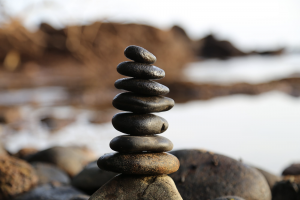
HOW DO I STAY ON TOP OF MY MENTAL HEALTH DURING COVID19? (Originally, “Finding Structure in Chaos: Staying on Top of your Mental Health during COVID19” Written by Dr. Danielle Kamis, Los Altos, CA)
The coronavirus pandemic presents us with new, and even frightening challenges that many of us have never previously experienced. Our daily routines have been markedly disrupted, leading to ever increasing levels of anxiety and stress physically, mentally, and financially. Now more than ever before, we must focus on the importance of fortifying our own mental strength by taking practical steps which allow us to accept this current uncertainty while finding comfort that we are doing our part to help “flatten the curve” of the virus’ spread. Here are some practical tools to help accomplish this.
1.) Reframe “I am trapped inside” to “I am safe in my home and have time to focus on my own needs”. There have been many changes and restrictions placed on our lives, leading to a feeling of being out-of-control. Rather than focusing on what is out of our control, which leads to increasing levels of anxiety, focus on what is in your control. Use this time to do those activities that you have not had time to do such as re-connecting with people you have lost contact with or exploring areas of interest that have been on your “to do” list. Doing just one new or personally satisfying activity each day can lead to a sense of accomplishment, and a positive outlook while rebuilding a sense of being in control.
2.) Keep a regular daily schedule
Create and maintain a routine for yourself that is similar to your previous schedule. Working from home can lend itself to a more irregular lifestyle, which often leads to less structure, focus and disorganization. Take the time to complete your regular morning routine, wake up at your typical weekday morning times, put your work clothes on, and be sure to take time to eat nutritious meals and exercise each day. Adhering to your normal daily routine will keep you active, while helping maintain much needed structure in your life.
3.) Prioritize cleanliness and organization in your home
As mentioned previously, this is a time to ensure continuing routines such as household chores we often take for granted. For example, it is helpful to keep our home spaces organized and clean. A messy house can lead to enhanced feelings of anxiousness, lassitude and even claustrophobia. Similarly, keep home areas functional as you had previously, for example, eat at the kitchen table and not in bed, and work at your desk rather than the couch. Also, setting up a new space for work and other daily activities can be helpful tools that reinforce personal regulation.
4.) Start a new quarantine experience
For example, learn to cook new and intricate recipes, start a new habit of daily meditation, yoga, journaling or start new hobbies such as origami or painting. Perhaps you can take a walk every day in the afternoon or connect with a parent or sibling over FaceTime. In sum, have something new and special which will help you look forward to each day.
5.) Limit media consumption
Though it is important to stay informed, we also should assiduously avoid continuous exposure to news and social media regarding the coronavirus epidemic. A constant flow of media about the coronavirus can trigger increased levels of anxiety, fear, and panic. Limit your exposure to news or web surfing. Set aside a limited time to watch the news, and if necessary, go to only trustworthy, medical websites or information from your primary care physician.
6.) Use telehealth as an option to talk to a professional if your anxiety becomes unmanageable.
Do not hesitate to reach out for professional help if your anxiety is reaching unmanageable proportions. Many licensed therapists and psychiatrists have made available telehealth options over privacy-compliant video chat platforms. Such professional help and guidance can prove invaluable and you should have no hesitancy in taking advantage of such services.
Finally, in addition to the six practical tools discussed above to help us deal with the anxieties and challenges of the current coronavirus epidemic, I think it vital for us to remember that generations of our forebears have successfully dealt with circumstances as challenging as this current coronavirus epidemic: earlier world-wide pandemics, famines, devastating economic depressions, the Holocaust, and two horrific world wars. I strongly believe that all of us have within us a deep reservoir of resilience, strength, and courage to carry us through this particular challenge. Indeed, remembering this is critical as we armor ourselves mentally and physically to see us triumph over this particular challenge and by so doing help future generations successfully overcome similar daunting circumstances.
Dr. Danielle Kamis is a psychiatrist who treats patients in her private practice in Los Altos, CA. She specializes in the treatment of sleep problems, women’s wellness, and athletes, as well as practices cognitive behavioral therapy. For further information please visit kamismd.com or send an email to [email protected].
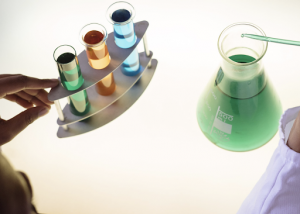
WHAT’S THE DIFFERENCE BETWEEN A “MOLECULAR” COVID TEST AND A “ANTIGEN” COVID TEST, AND DOES IT MATTER?
There are two types of COVID-19 tests — diagnostic tests and antibody tests. Let’s focus on diagnostic testing. There are two types of diagnostic tests — molecular tests, such as PCR tests, that detect the tiniest bits of genetic code specific to SARS-CoV-2, and antigen tests that detect proteins that the virus produces, such as a specific protein on one of its namesake “corona” spikes. Molecular tests are highly accurate but require trained healthcare workers, lots of PPE, lab technicians, specialized equipment, swabs and chemicals, and . . . time (for the test itself, and transport to the lab). Antigen tests, once scaled up and distributed, are rapid, can be used in many different settings, are simple to perform, but currently are significantly less accurate than molecular tests.
Molecular tests (AKA: nucleic acid amplification test (NAAT), PCR test, RT-PCR test)
How it works: A sample of mucus is typically taken from a person’s nose or throat (a few use saliva). The sample is stored in a sterile tube or vial and then sent to a lab equipped with PCR (polymerase chain reaction) technology. Trained lab technicians extract any genetic material and mix it with reagents (chemicals, primers and probes — some derived from the coronavirus itself) to greatly amplify viral genetic material if present.
How accurate is it: overall these are the most reliable tests and are the gold standard for accuracy. However no test is perfect and some things can affect the test’s accuracy: you may have the virus, but the swab might not collect it from your nose or throat; the sample may be accidentally contaminated by the virus during collection or analysis; the sample may not be kept at the correct temperature prior to analysis; the reagents used during the PCR analysis may not work correctly.
How long it takes: Samples are sent to centralized labs for analysis, so it can take days (sometimes over a week during times of high demand), though a result can be quicker if hospitals or clinics have PCR testing capacity in-house. There are two rapid PCR tests, which can be run on specialized platforms already available in certain clinical sites across the U.S. The fastest one, by Abbott Labs, can provide a result in less than 15 minutes, but several studies suggest this test can miss 10-15% of cases.
Antigen Tests
How it works: Think of a rapid Strep test in a doctor’s office, or at-home pregnancy test. A sample is typically taken from a person’s nose or throat (tests using saliva are in the works) and put onto a specially treated strip, which uses a color marker to indicate if coronavirus proteins are present.
How accurate is it: So far, not very. There are two antigen tests currently in use under an Emergency Use Authorization. At best, they miss between 15-20 % of cases. Positive results, though, are quite accurate. While there are many up and coming point-of-care antigen tests which appear more promising, they will not be available in clinics for months.
How long it takes: As little as 15 minutes. However, negative results should be confirmed with a molecular test, adding days, to a week, more.
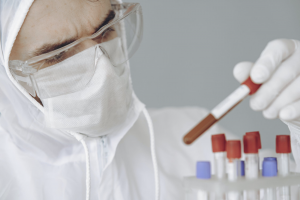
I HEAR COVID TESTS ARE HARD TO GET, ARE WE BEING TOO PICKY?
Currently, the US is behind on testing in such large magnitudes that our case numbers are increasingly inaccurate since we simply aren’t counting the tests we can’t run. One major cause is that the gold standard of testing is a molecular based PCR test. This test requires swabs, tubes and reagents, and a lab. If you put all of those together you will find each with a bottleneck that has a multiplying effect. In most large cities, turnaround times for a PCR molecular test are 5-7 days. This is true for academic centers such as Stanford Hospital and large commercial labs such as Labcorp. Bill Gates commented in an interview last week that if you can’t get a test result in 48 hours, we as a country shouldn’t be paying for it since the data are too late to change our behaviors. Can we solve this problem? Yes, if we as a country, with medical leadership, can accept alternative testing that has less accuracy.
This New York Times article talks about how initially, the medical community was facing a shortage of N95 masks and the directive to the public was to not hoard, or not to wear masks at all. Later it became clear even cloth masks offer protection and that everyone doesn’t need an N95. The idea that if everyone can’t have an N95 was shortsighted in looking at the benefits of non-medical grade masks. This could be true for testing.
Leaving aside the systemic problems surrounding testing delays, the question is should we rely on the gold standard molecular test? The answer in March was yes, it is the most sensitive test in picking up the viral RNA particles. We, as a nation, and the medical community, hold high standards for all our testing and COVID testing is held to the same standards. But now, here we are months into a pandemic and the situation does not look good. We need more point-of-care testing so we can make real-time decisions. We can do that with antigen testing. This type of testing detects protein antigens from the virus particles; it is similar to the flu swab. It can be done on-site and results within minutes. The downside is, until now only one company Quidel has an Emergency Use Authorization (EUA) from the FDA for its test and it has a lower sensitivity than the PCR test. For the flu, a negative test often was sent for a reflex PCR test; this could be the protocol for COVID as well.
From a surveillance standpoint, we know that more frequent testing and quick results are needed to mitigate the virus spread. So it may be time we adopt pooled testing (testing groups of people) frequently, with a less accurate (20% of the time) test to gain some traction. Medical offices, schools, businesses could do antigen testing as we try desperately to open our country. The longer we rely heavily on PCR testing with delayed results, we lose ground. We could be facing a situation where perfect is getting in the way of good enough, and right now we may need to accept less accurate widespread testing to get us out of the dire straits we are in.
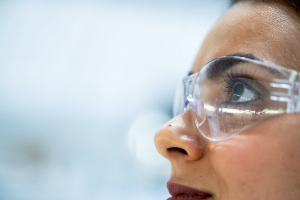
DO WE REALLY NEED TO WEAR GOGGLES TO PREVENT COVID19?
At this point, there is no firm recommendation that the general public needs to wear goggles or a face shield to protect themselves against COVID, but we suspect that likely it could help prevent some transmission. That said, eye protection should only ever be used in addition to a face mask and not in place of, as we know for a fact that masking prevents spread. This question arose recently as Dr. Fauci mentioned in a news segment that “theoretically you should protect all of the mucosal surfaces, so if you have goggles or an eye shield, you should use it.” While research generally indicates that we’re most likely to get infected through the nose and mouth, in one recent report published in The Lancet that analyzed 172 observational studies, face shields, goggles, and glasses were associated with a lower risk of infection (6%) compared with no eye covering (16%). To date, there are no specific studies comparing transmission rates with or without goggles/facemasks, but in due time, those studies will probably be done. Based on the information currently available, the CDC does recommend that healthcare professionals in areas with high rates of community spread wear protective eyewear if they might come into contact with COVID-19 patients or those suspected to have it.
At this time, we suggest that if you have to be around others indoors for a prolonged period of time (greater than 15 minutes) such as on an airplane, it might not be a bad idea to protect your eyes. Regular eye glasses or sunglasses are not considered to add protection, but rather you will need something like safety glasses or a plastic face shield that can easily be sanitized after use. Importantly, if you opt to wear goggles or a face shield, make sure that it is comfortable and does not require you to frequently adjust it as you want to avoid unnecessarily touching your face. Otherwise, wear a mask, avoid crowded places, wash your hands or sanitize frequently and avoid touching your eyes and remember that public safety recommendations will likely continue to evolve as we learn more about Coronavirus every day.
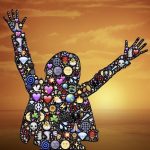
HOPE AND GRACE
If you have made it this far, time for a reward, something to lighten your day, and acknowledge the human spirit. Find some escape, or perhaps even inspiration, in this collection of works and perspectives gathered from around the world. Please contact me directly if you have come across something that has lifted your heart today. Dr. Eric Weiss

Bill Tell! A favorite from my days playing the trumpet with the Stanford Band – “We all think the world could use a little joy right about now. SF Symphony musicians & their little ones answer the call”. Enjoy this musical video montage!
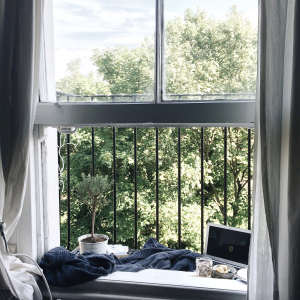
Don’t Like The View From Your Window? Try someone else’s. Maybe it’s been awhile since you got out. Staying home during the coronavirus pandemic has meant your view has not changed. For months. Try a change of scenery — without going outside: Window Swap! Enjoy these 10 minute, HD video views from windows just like yours around the world. With sound!
Again, CV🦠News is a labor of love. If you enjoy reading this, please share widely! Was this forwarded to you by a friend? Please subscribe here.
*****
Yours, in health and resilience,
Eric and the TVD MD team…



